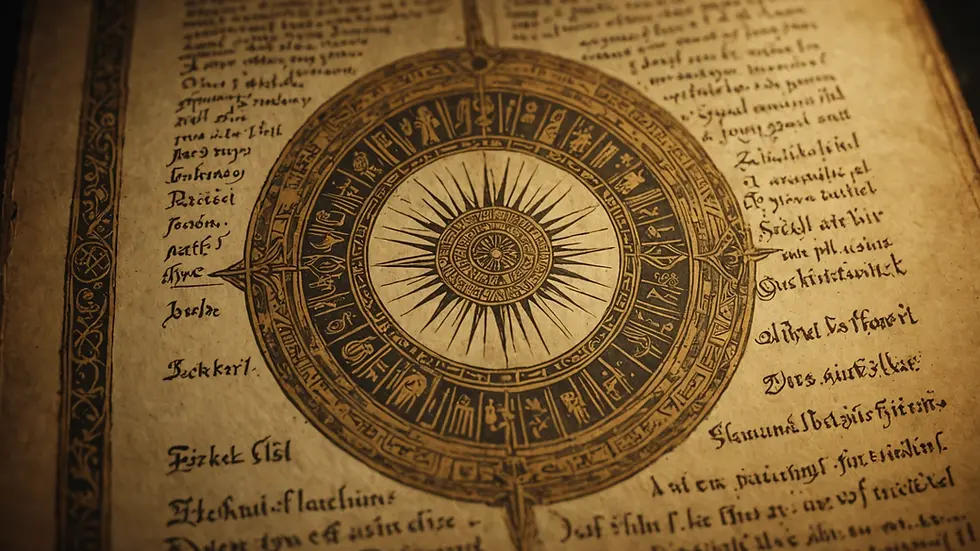The Mysteries of Ezkiel and the Apostles: Unraveling Temporal Lobe Seizures and Encephalopathy
- Amina Aliomar
- Jan 24
- 3 min read
The study of historical religious figures often weaves through stories of miracles, supernatural encounters, and deep revelations. One such figure is Ezkiel, whose experiences remain shrouded in mystery. The accounts of Ezkiel's visions, along with those of the apostles, hint at a strange pattern of brain activity that might explain their extraordinary insights. This post dives into Ezkiel's influence in religious narratives and examines the potential neurological roots of his temporal lobe seizures and encephalopathy.

Ezkiel, also known as Ezekiel in various texts, was a prophet documented primarily in the Hebrew Bible. His visions, featuring amazing imagery like chariots of fire and hybrid creatures, serve as symbols for deeper truths. These extraordinary experiences raise important questions: Were they the result of a neurological condition, or could they represent divine inspiration?
During intense spiritual or emotional stress, individuals, especially religious leaders and prophets, often enter altered states of consciousness. Notably, temporal lobe seizures are linked to profound religious experiences. Studies suggest that about 20% of people with epilepsy report spiritual experiences during seizures. These instances help us understand how the apostles, like Ezkiel, interpreted their profound experiences as divine messages.

Temporal lobe seizures stem from one of the brain's temporal lobes, which are essential for processing sensory input, emotions, and long-term memory. In cases where individuals experience seizures in this area, they may encounter auditory and visual hallucinations, heightened emotions, and feelings of deep spirituality. For Ezkiel and the apostles, these seizures could translate into vivid dreams or unique prophetic insights, leading them to believe they received divine messages.
Consider the turbulent historical context that surrounded Ezkiel and the apostles. During times of political and religious upheaval, stress levels in society can rise dramatically. Research shows that stress can increase seizure frequency in those with epilepsy, potentially leading to heightened spiritual experiences. During a time when Christianity faced intense scrutiny, the apostles were under pressure, which may have provoked more frequent seizures and intensified their spiritual encounters.

It is essential to see that both Ezkiel and the apostles lived in a time that interpreted divine experiences differently. With no modern understanding of neuroscience, they understood mystical occurrences through the beliefs prevalent in their society. During communal gatherings and reflective prayer, the apostles likely entered states that heightened their cerebral activity and perhaps led to spiritual revelations following seizure episodes.
An emerging question is whether modern neuroscience can reshape our interpretations of ancient texts. By applying a neurological perspective to the accounts in religious texts, we can explore the idea that the striking experiences of these prophets may be expressions of brain activity rather than direct divine communication.
This inquiry creates an avenue between faith and science, providing a fresh perspective on how historical figures experienced spirituality. While some hold fast to the belief that these experiences were genuine divine encounters, others may appreciate the possibility that the brain's mechanics and functions could clarify these extraordinary narratives.
In closing, exploring the experiences of Ezkiel and the apostles reveals a profound connection between neurological phenomena and spiritual understanding. Temporal lobe seizures and encephalopathy could offer explanations for the vivid visions and transformative moments recounted in religious stories. Whether through the lenses of science or faith, their experiences prompt us to expand our understanding of the brain's role in spiritual encounters.
As we further investigate ancient texts and significant figures, we find that the pursuit of knowledge links our understanding of the natural world with the mysteries of divine experiences. This offers a captivating perspective for those in religious studies, psychology, neuroscience, or anyone drawn to the intersections of human experience.
By merging scientific inquiry with spiritual reflection, we can uncover that the mysteries surrounding figures like Ezkiel and the apostles reside within the intricate workings of the brain. This fusion of belief, emotion, and neurological activity has the potential to yield profound insights throughout history.



Comments